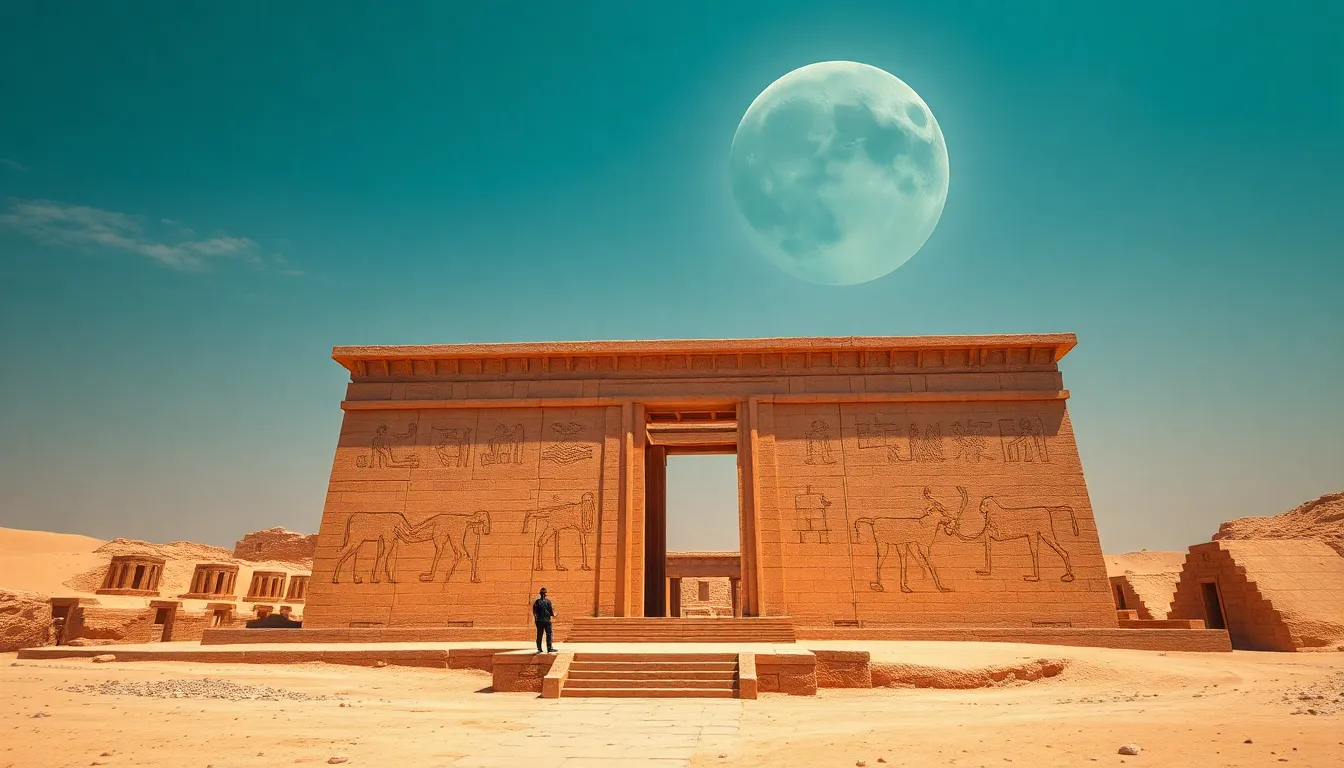The Sacred Geography of the Temple of Hathor
I. Introduction
The Temple of Hathor, located in Dendera, Egypt, is a stunning example of ancient Egyptian architecture and spirituality. Dedicated to Hathor, the goddess of love, beauty, music, and motherhood, this temple serves as a testament to the importance of sacred geography in ancient Egyptian culture. The location, design, and rituals associated with the temple are deeply intertwined with the beliefs and practices of the time.
This article aims to explore the historical context, geographical significance, architectural design, rituals, cosmic orientation, and modern relevance of the Temple of Hathor, shedding light on its sacred geography and enduring legacy.
II. Historical Context of the Temple of Hathor
The Temple of Hathor has a rich history that dates back to the Ptolemaic period, around 225 BCE. Construction was initiated under Ptolemy III and completed by subsequent rulers. The temple is renowned for its well-preserved reliefs and inscriptions, which provide insight into the religious practices of the time.
Hathor was one of the most important deities in ancient Egyptian religion, embodying the principles of femininity, fertility, and joy. As the mother of Horus, she was integral to the royal family’s legitimacy and was worshipped throughout Egypt.
Key archaeological findings at the site include:
- Relief carvings depicting various deities and rituals
- Inscriptions detailing offerings and ceremonies
- Artifacts that illustrate the daily lives of worshippers
III. Location and Landscape of the Temple
The Temple of Hathor is strategically located in Dendera, about 2.5 kilometers from the Nile River. This positioning is significant, as the Nile was the lifeblood of ancient Egypt, influencing agriculture, trade, and spiritual practices.
The landscape surrounding the temple includes:
- Desert terrain, which represents the chaos before creation
- The fertile banks of the Nile, symbolizing life and sustenance
- Natural features like hills that were seen as sacred
The relationship between the temple and the Nile was crucial, as it represented the connection between the divine and the earthly realms, reinforcing the temple’s role as a sacred space.
IV. Architectural Design and Symbolism
The architectural layout of the Temple of Hathor is a marvel of design, featuring a vast hypostyle hall, sanctuaries, and numerous chambers adorned with intricate carvings and hieroglyphics. The temple is characterized by its:
- Columns that resemble papyrus plants, symbolizing regeneration
- Cornices and capitals that feature Hathor’s head, connecting her to the structure
- Astrological symbols integrated into the ceiling, reflecting the cosmic beliefs of the Egyptians
Sacred geometry plays a significant role in the design, with the layout aligned to celestial events, enhancing the temple’s spiritual significance and its connection to the greater cosmos.
V. The Role of Rituals and Ceremonies
The Temple of Hathor was a vital center for rituals and ceremonies dedicated to the goddess. Major rituals included:
- The Festival of Hathor, celebrating her as the goddess of music and joy
- Rituals for fertility and motherhood, appealing to Hathor’s protective nature
- Offerings and sacrifices to ensure the favor of the goddess
The temple served as a hub for worship, drawing pilgrims from across Egypt who sought to participate in these spiritual practices. The sacred landscape surrounding the temple enhanced the significance of these rituals, as they were believed to connect worshippers with the divine.
VI. The Temple’s Cosmic Orientation
The Temple of Hathor is not only a religious site but also an astronomical observatory. Its alignment with celestial bodies reveals a deep understanding of the cosmos among the ancient Egyptians. Key aspects include:
- Alignments with the solstices and equinoxes, reflecting the cycle of life and death
- Connections to the stars, particularly Sirius, which was associated with Hathor
- Architectural features designed to capture sunlight during key astronomical events
These cosmic orientations had profound implications for religious practices, as they reinforced the belief in the connection between the earthly realm and the divine.
VII. Preservation and Modern Significance
Today, the Temple of Hathor remains a well-preserved site, attracting visitors from around the world. Preservation efforts include:
- Restoration of damaged structures and reliefs
- Research and excavation to uncover further archaeological findings
- Educational programs to raise awareness about the temple’s history and significance
The temple’s impact on modern spirituality is notable, as it continues to inspire those interested in ancient wisdom, goddess spirituality, and the sacredness of the natural world. Additionally, it plays a vital role in tourism, contributing to the local economy and promoting cultural heritage.
VIII. Conclusion
The sacred geography of the Temple of Hathor encapsulates the intricate relationship between ancient Egyptians and their environment. This temple stands as a testament to the spiritual, architectural, and astronomical achievements of a civilization that revered its gods and the natural world.
Reflecting on the temple’s enduring legacy, we see how it continues to inspire modern understanding of the intersection between geography and spirituality. The Temple of Hathor is not merely a historical site; it is a bridge connecting us to the profound beliefs and practices of ancient Egypt.




